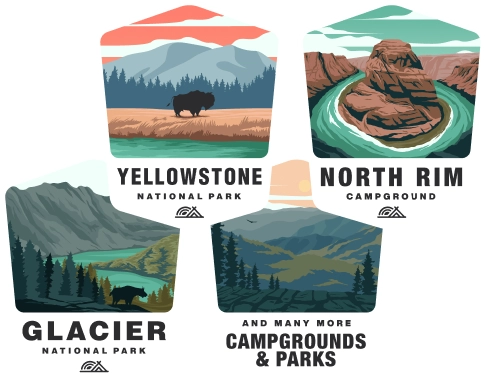Camping at Lake Clark National Park and Preserve
Introduction to Lake Clark National Park and Preserve
Lake Clark National Park and Preserve is a stunning wilderness area located in Southwest Alaska. This remote park, accessible only by plane or boat, offers a diverse range of ecosystems, including rainforests, alpine tundra, glaciers, and volcanoes. The park is a haven for outdoor enthusiasts and those seeking solace in the wilderness.
Camping Options
Backcountry Camping: Backcountry camping is the primary option for overnight stays in Lake Clark National Park. Campers must be self-sufficient and well-prepared for the wilderness. There are no designated campsites, so you can choose a spot that suits your preferences and follows the Leave No Trace principles.
Public Use Cabins: For those looking for a bit more structure, the park offers a limited number of public use cabins that can be reserved in advance. These rustic cabins offer basic shelter but usually do not include amenities like running water or electricity.
Permits and Fees
Camping Permits: As of the latest available information, Lake Clark National Park does not require permits for backcountry camping, but this could change, so always check the latest park regulations before planning your trip.
Entrance and Camping Fees: There are no entrance fees for Lake Clark National Park. Additionally, there are currently no fees for backcountry camping. However, if you plan to use one of the public use cabins, there will be a reservation fee.
Bear Safety
Lake Clark National Park and Preserve is bear country, with both brown and black bears present. Campers must practice bear safety, including storing food in bear-resistant containers, keeping a clean camp, making noise while hiking to avoid surprise encounters, and knowing how to react if you encounter a bear.
Weather and Best Time to Visit
Weather: The weather in Lake Clark can be highly variable and unpredictable. You should be prepared for rain, cold, and possibly snow, even in the summer months. High-quality, waterproof gear is essential for a comfortable experience.
Best Time to Visit: The best time to visit Lake Clark for camping is during the summer season (June to September), when the weather is more stable, and access to the park is easier. However, even in summer, conditions can be challenging due to mosquitoes and other biting insects.
Access to the Park
Since roads do not lead to Lake Clark, all visitors arrive either by small aircraft or by boat. Many air taxi services operate out of Anchorage and other Alaskan towns, offering both transportation and air tours of the park.
Leave No Trace
When camping in Lake Clark National Park, it's imperative to follow Leave No Trace principles. This includes packing out all trash, minimizing campfires, avoiding wildlife disturbances, and leaving the pristine environment as you found it for future visitors to enjoy.
Conclusion
Lake Clark National Park and Preserve offers an extraordinary camping experience in the Alaskan wilderness. Due to its remote nature, visitors must plan carefully, respect the landscape, prioritize safety, and be prepared to be fully self-sufficient in a wild and beautiful setting.
